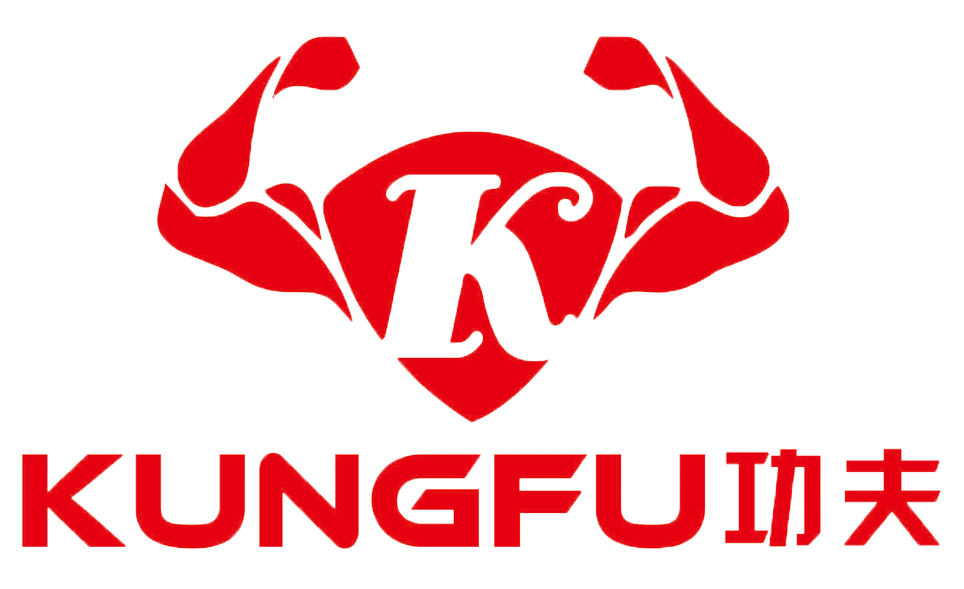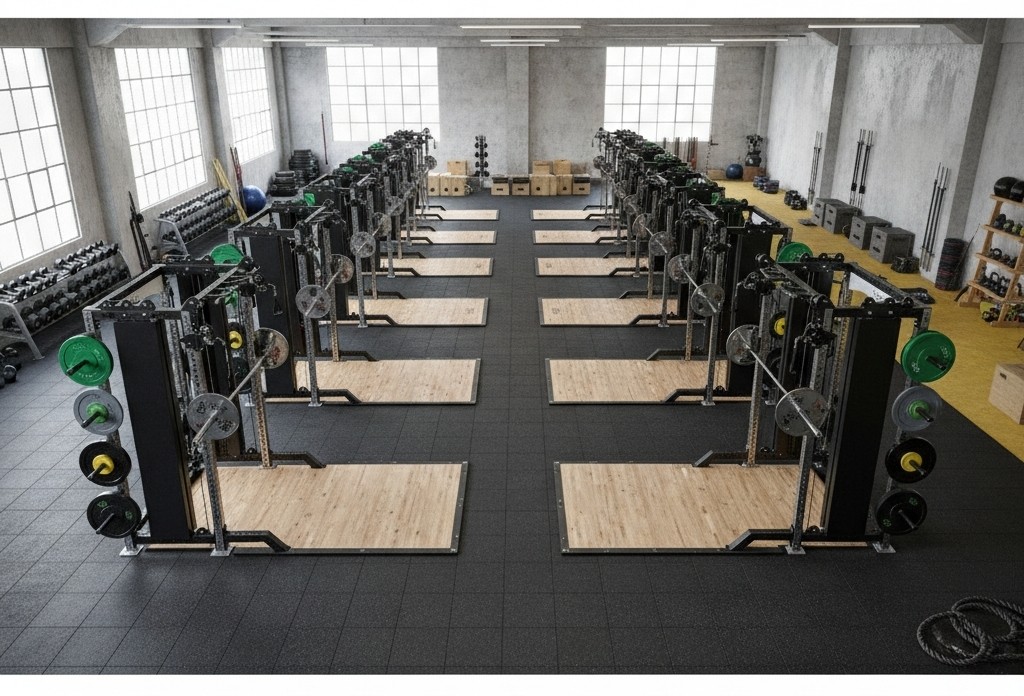Introduction
Let's be direct. For any commercial gym, the strength training area is the engine room.
The Heart of the Zone: The Evolution of the Squat Rack
If you look at the layout of elite, high-traffic facilities, you'll see a clear trend: a move towards high-spec half racks. A half rack provides an open, less intimidating design compared to a full power cage, which is crucial for coaching and creating a dynamic group environment. But the modern half rack is much more than a place to squat. It's an all-in-one solution that integrates the functions of multiple machines into a single footprint. This is achieved through two key features:
- Integrated Cable Systems: The most valuable evolution is the addition of a dual adjustable pulley system directly into the rack's frame. This masterstroke of engineering instantly doubles the unit's functionality. It can now function as a heavy-duty squat rack and a full cable crossover machine, a low row station, and a high pulley station.
- Integrated Weight Storage: The vertical posts are utilized for built-in weight plate storage horns. This isn't just a minor convenience; it's a critical design feature for safety and efficiency.
The Business Pitch: You're not selling your client a squat rack. You are selling them a complete, self-contained training pod that combines a squat rack, a cable machine, and a weight tree in a single, space-saving footprint. The ROI on that level of consolidation is immense.
Why This Design Maximizes Member Experience
- No More Waiting: A member can perform their heavy squats, then immediately move to cable flyes, tricep pushdowns, and core work without ever leaving their station. This workout density is a huge value-add.
- A Sense of Personal Space: Each station, with its own rack, weights, and platform, feels like a personal training space. This creates a premium experience that members are willing to pay for and is a powerful tool for retention.
The Supporting Ecosystem: Building a Complete Training Pod
The rack is the heart, but the elements surrounding it are what complete the solution and turn a good space into a great one.
The Foundation: The Lifting Platform
In a high-performance strength area, the lifting platform is not an afterthought; it's an active piece of equipment. Each rack should be paired with a dedicated lifting platform. This isn't just for looks.
- Equipment Protection: The primary function is to protect the expensive barbells and bumper plates from the repeated impact of heavy lifts. Dropping a loaded barbell on a concrete or standard rubber floor can damage the bar's bearings and crack plates. A platform absorbs that impact.
- Floor Protection: A heavy drop can easily crack a concrete subfloor. The multi-layered design of a platform (rubber and wood) dissipates the force, protecting the building's foundation.
- Performance and Safety: The wooden center of a platform provides a firm, stable, and non-compressible surface that is ideal for explosive movements like the clean & jerk and the snatch. It gives the lifter a secure and confidence-inspiring base to pull from.
The Groundwork: High-Performance Rubber Flooring
The flooring surrounding the platforms needs to be just as robust. The industry standard for a commercial strength area is high-density, vulcanized rubber flooring, typically in tile or roll form.
- Durability: It needs to withstand constant foot traffic, dropped dumbbells, and the weight of heavy equipment without cracking or denting.
- Safety: It provides excellent grip, even when wet, reducing the risk of slips and falls.
- Sound Dampening: A key, often overlooked benefit. High-quality rubber significantly reduces the noise of dropped weights, creating a more pleasant and less intimidating environment for all gym members.
The Blueprint for Success: Layout, Flow, and Scalability
One of the most critical elements of a premium strength area is adequate spacing between stations. A common mistake made by gym owners trying to maximize capacity is cramming too much equipment into a small area. This is a false economy.
- Safety Buffer: There must be enough room for an athlete to safely bail out of a failed lift (forward or backward) without hitting another person or piece of equipment.
- The Coaching Lane: The space between racks creates a clear "coaching lane," allowing trainers to move freely between members, offering cues, and ensuring safe form without disrupting other lifters.
- Lifting Space: For facilities that allow Olympic lifting, you need enough clear space in front of the platform for the dynamic movements of the snatch and clean & jerk.
The Business Pitch: Proper spacing isn't wasted space; it's an investment in safety and a premium member experience. It's a visual indicator of a high-quality, professional facility. A good rule of thumb is to allow for an 8x8 foot or even a 10x10 foot "working box" for each station.

Designing for Flow and Efficiency
- Centralized Dumbbells/Kettlebells: As seen in well-designed gyms, supplemental equipment like dumbbell and kettlebell racks should be placed along a perimeter wall, easily accessible from all stations but not obstructing the main lifting areas.
- Clear Pathways: The layout should create obvious, unobstructed pathways for members to move through the gym without having to walk through someone's personal lifting space.
Planning for the Future: Scalability
The modular design is inherently scalable. A new gym owner can start with four or six all-in-one rack stations, and as their membership grows, they can easily add two more identical stations without having to redesign their entire floor plan. This modular approach allows the facility to grow with its revenue.
Conclusion:
A gym strength training area is a result of intelligent, purposeful design. It starts with selecting a versatile, space-saving centerpiece like the all-in-one cable half rack and expands outward to include the proper flooring, platforms, and accessories. It's tied together by a layout that prioritizes safety, efficiency, and the member experience.
Let's Design and Build a Strength training Area
Contact us today to discuss your project needs, get detailed specifications, and receive a wholesale quote.
Email: kungfu@rzkungfu.com

